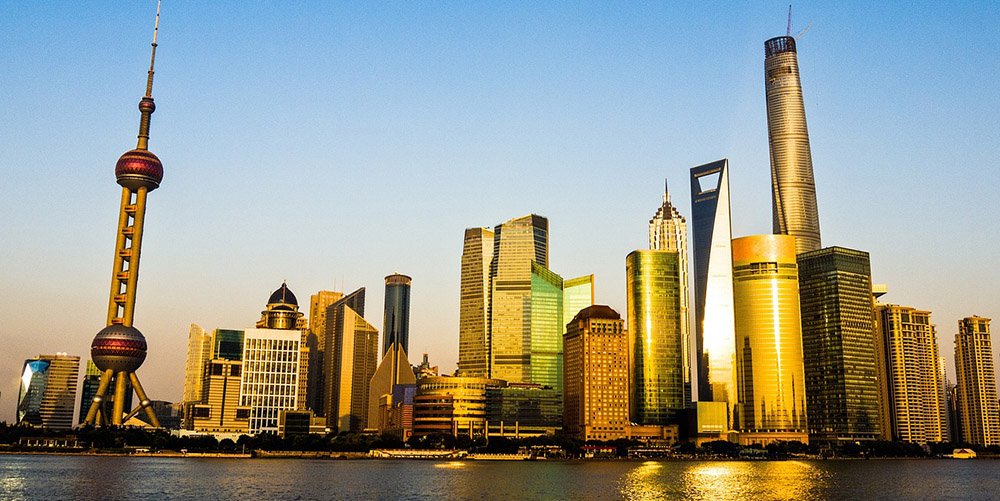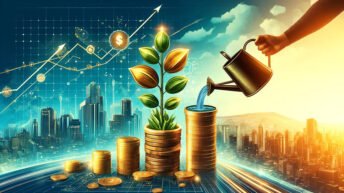China’s economy, the second-largest globally, is at a critical juncture. Recent regulatory crackdowns, massive debts, and uncertain policy shifts are causing alarm not only within its borders but also across the world’s financial markets.
The potential faltering of this economic powerhouse could have cascading effects, threatening to disrupt international trade, investment flows, and economic stability worldwide.
Historical Context and Economic Transformations
The Foundations of Economic Reform
The trajectory of China’s economy was significantly altered in 1984 when Deng Xiaoping introduced the “Decision of Reform of Economic Structure.” This pivotal policy shift moved China away from a strictly state-controlled economy towards more market-oriented mechanisms.
Deng’s vision was to energize the stagnant economy by introducing elements of capitalist market practices while retaining the Communist Party’s control over the political landscape.
Shift Towards Market-Oriented Practices
This reform paved the way for the emergence of privately owned enterprises and encouraged foreign investment, which was a drastic departure from the Maoist policies of economic isolation and strict government control over all means of production.
The introduction of Special Economic Zones (SEZs) was a cornerstone of this new economic policy, acting as testing grounds for market liberalization and attracting foreign technology and investment.
Expansion of the Private Sector and Urbanization
As market reforms deepened, China’s private sector flourished. Manufacturing and exports surged, driven by both state-owned and private enterprises. The economy’s rapid expansion fueled massive urban migration; millions left rural areas to work in burgeoning industrial cities.
By 2020, the urban population had risen dramatically, accounting for over 60% of the country’s total population, up from 27% in 1992. This urbanization was not only a demographic shift but also a transformation in lifestyle and economic status for hundreds of millions of Chinese citizens, fostering a burgeoning middle class that would become a pivotal force in China’s consumer market.

Current Economic Challenges
The Evergrande Crisis
The unfolding crisis surrounding Evergrande, a colossal property developer with over $300 billion in debt, epitomizes the fragility of China’s economic growth model, which has heavily relied on real estate and construction sectors.
Evergrande’s inability to meet its debt obligations has raised alarms about the sustainability of the property market and its domino effects on the global financial system. This crisis highlights the broader risks of high leverage in the Chinese economy, where similar debt-laden companies could also fail, leading to potential financial contagion.
Property Market Instability
China’s property market, valued at a staggering $52 trillion, is experiencing significant turbulence. In response to speculative real estate investments and soaring debt levels, the government has introduced measures to cool down the overheating market.
These include restrictions on speculative buying and tightening credit conditions for property investments. However, these interventions have a delicate balance to maintain: too stringent, and they risk precipitating a market crash; too lenient, and the bubble may grow larger, increasing the eventual burst’s impact.
Tech Industry Crackdown
Simultaneously, Beijing’s crackdown on its burgeoning tech industry has sent shockwaves through markets and investor communities. Fines and new regulations targeting major tech firms like Alibaba and Tencent have been imposed under the guise of curbing monopolistic practices and protecting consumer data.
This regulatory shift suggests a broader recalibration of the role tech giants play in China’s socio-economic landscape, potentially stifling innovation and deterring foreign investment.
Declining Consumer-Driven Growth
The Chinese economy is also grappling with a significant shift away from state-led investment toward a model driven by consumer spending. However, this transition is hindered by the insufficient disposable income among the majority of Chinese households.
Despite impressive growth figures, income inequality and the high cost of living prevent a substantial portion of the population from participating fully in the economy as consumers, which in turn stifles domestic demand and economic diversification.
Shift in Economic Policy Under Xi Jinping
Return to State Control
Under President Xi Jinping, there has been a noticeable shift back towards more state-controlled economic models. This regression includes increased interventions in various sectors, signaling a departure from the market liberalization trends seen in previous decades.
The tightening grip reflects Xi’s vision of reinforcing state sovereignty over critical economic pillars and reducing dependence on unpredictable market forces.

Ideological and Legacy Considerations
Xi’s approach is heavily influenced by ideological considerations, aiming to shape a legacy that positions China as a global leader underpinned by socialist values.
This ideological shift is evident in the emphasis on “common prosperity,” aiming to mitigate social inequality and cement the Party’s role as the arbiter of economic and social policy. Such changes are seen as efforts to stabilize Xi’s and the Party’s long-term authority by aligning economic policies more closely with socialist principles.
Risks of Economic Retrenchment
This return to more autocratic economic practices carries substantial risks. By stifling market dynamics and innovation, China may undermine the very engines of growth that facilitated its economic miracle.
Moreover, the international business community’s wariness could lead to reduced foreign investment and collaboration, further isolating China economically at a time when global cooperation is crucial to tackle wide-ranging challenges.
Global Implications and International Relations
Impact on Global Markets
China’s economic slowdown has far-reaching consequences for global markets. As a major exporter and importer, any significant disruption in China’s economic activities can lead to fluctuations in global trade flows and commodity prices.
A slower Chinese economy could reduce demand for raw materials, energy, and intermediate goods that countries around the world supply, impacting economies from Australia to Brazil. Moreover, multinational companies that rely on Chinese manufacturing might face supply chain disruptions, increasing costs and affecting production globally.
International Trade Tensions
Relations with major trading partners such as the U.S. and the EU have been tense, with issues ranging from trade imbalances to human rights concerns coloring negotiations. The U.S.’s emphasis on rectifying trade imbalances and protecting intellectual property has led to tariffs and economic sanctions, which could intensify if China further closes its markets.
Similarly, the EU has shown resistance to advancing trade agreements amidst concerns over China’s human rights record and its geopolitical maneuvers. These tensions could exacerbate global economic uncertainty, affecting not just bilateral relations but the broader international economic landscape.
Geopolitical Moves
Internally, China might respond to economic pressures with more assertive geopolitical actions. This includes fortifying claims in the South China Sea, increasing pressure on Taiwan, and leveraging economic investments in other countries through initiatives like the Belt and Road Initiative.
Such actions could serve as distractions from domestic issues or as leverage in international negotiations, potentially leading to conflicts or deeper diplomatic rifts.

The Road Ahead: Scenarios and Strategies
Stabilizing the Economy
If China manages to stabilize its economy by addressing debt levels without causing major disruptions in the market, and if it can transition to a more sustainable growth model, the global economy might experience a period of renewed confidence in Chinese markets. This scenario would support global economic recovery, especially post-pandemic, and could foster increased international cooperation.
Consequences of Failure
Should China fail to stabilize its economy, the consequences could be severe both domestically and internationally. Domestically, failure could lead to unemployment, social unrest, and a potential crisis of legitimacy for the Communist Party.
Internationally, it could lead to a loss of investor confidence, withdrawal of foreign investment, and significant disruptions in global supply chains and financial markets.
Strategic Moves
To avoid economic disaster, China may need to implement reforms that include further liberalizing the economy, improving corporate governance, and enhancing transparency in financial markets. Additionally, fostering a more inclusive growth model that addresses income inequality could help stabilize domestic demand.
Internationally, adopting a more cooperative stance in trade negotiations and reducing aggressive geopolitical postures could help mend relations with key trading partners.
Conclusion
The stakes are incredibly high for both China and the global economy as Beijing navigates its current economic challenges. China’s decisions in the coming years will not only determine its own future but also significantly influence global economic stability and international relations.
The world is intricately linked to China’s economic health, and as such, its ability to manage internal pressures while engaging constructively on the global stage remains crucial. The path China chooses will resonate worldwide, highlighting the profound interconnectedness of modern economies and the global geopolitical landscape.








Add comment